
We live in an information age where the Internet is a basic human right. It was not easy to reach the current level of development, but we were able to, and now technologies allow us to live in that future, which until recently was revealed only on the pages of books. It is clear that technologies did not appear suddenly, some of them are rooted in the distant past.
One of these technologies is optical communication. It has been used since antiquity. But now we have underwater highways, satellite laser systems and much more. Let's take a look at how optical communication has evolved over time.
Semaphores and heliographs
The fact that the speed of light is much greater than the speed of sound, people understood a long time ago. And they began to apply this knowledge in practice. We are talking about light signals that were actively used, for example, in Ancient Greece. Of course, they guessed to use light and other civilizations, but among the Greeks, all this was especially well developed.
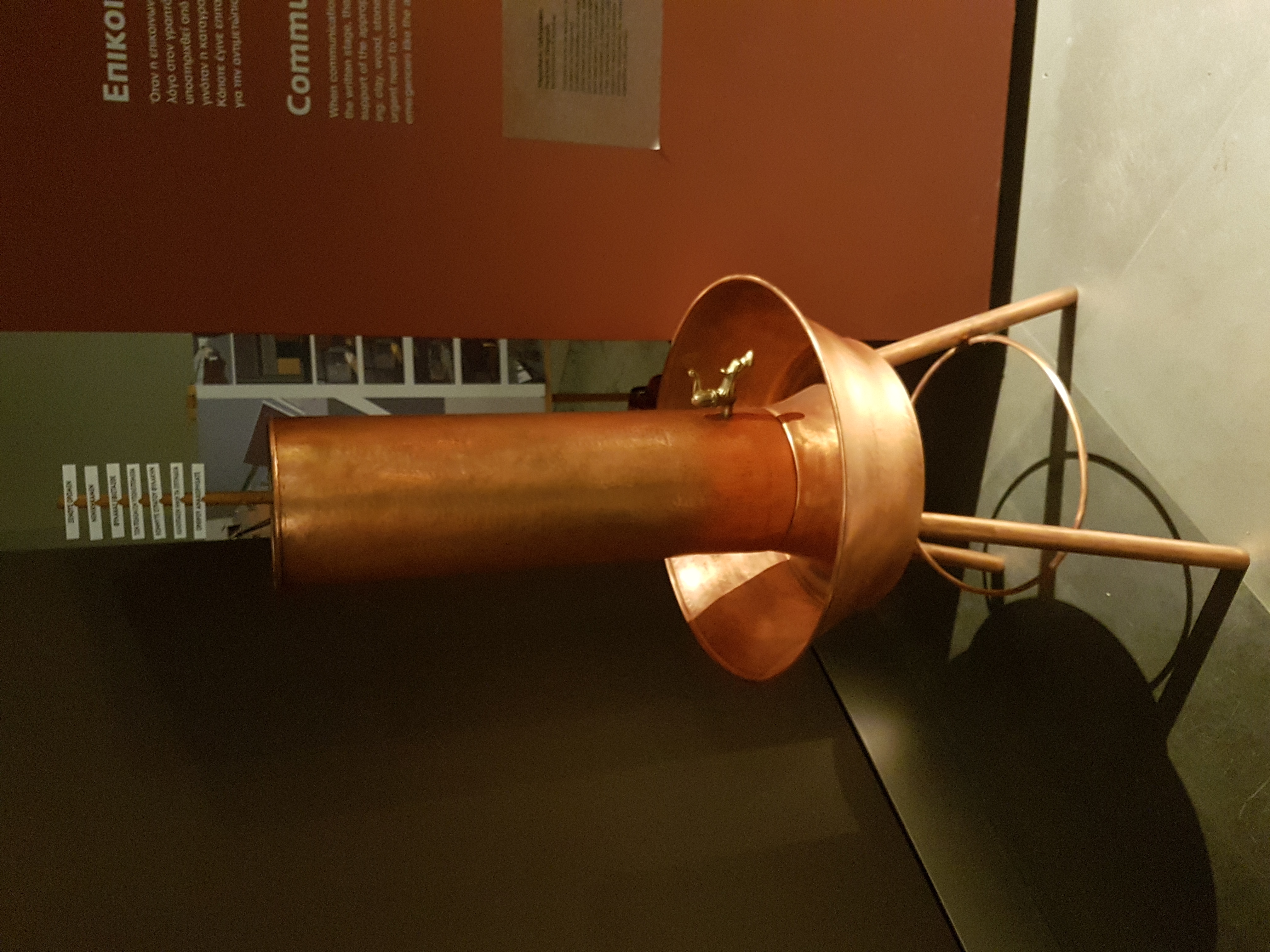
Graphic telegraph - reconstruction from a museum in Thessaloniki, Greece
The Greeks built a system known as Frictoria. These are towers on the tops of the mountains. The guards on the towers lit fires in a chain, which were clearly visible at a distance of up to 50 km. Accordingly, the sent message went to the desired point very quickly. Some sources even say that this is how the message about the capture of Troy spread throughout Greece.
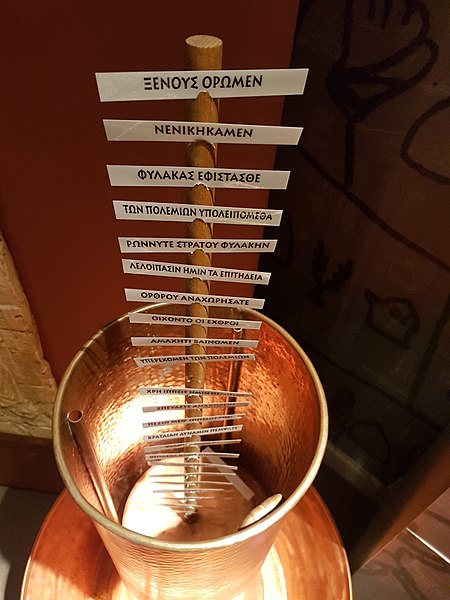
It was the Greeks who came up with a special code for light signals. The towers had two groups of 5 torches each. Each of them represents an element of the Polybius square . Accordingly, changing the location of the elements in this matrix made it possible to encode and transmit a variety of messages. Another option is the hydraulic telegraph, which was used during the First Punic War to send messages between Sicily and Carthage.
Here is what Wikipedia says about this telegraph: “Different predefined codes were applied to the rods at different points in height. To send a message, the sending operator will use a flashlight to signal the receiving operator; once they are synchronized, they will simultaneously open the nozzles at the bottom of their containers. The water will drain until the water level reaches the desired value, after which the sender lowers the torch and the operators simultaneously close their taps. Thus, the duration of the visibility of the sender's torch can be correlated with specific predefined codes and messages. "
Semaphores were used much later. In the 18th century was createdanother kind of optical telegraph, the network of which was later spread throughout France. It was the military communications network.

A separate element of the system is a tower with movable poles. An "alphabet" was developed where each letter had a specific position for the poles. The first optical telegraph line was built between Paris and Lille. The position of the poles was changed using 196 different positions - so that it was possible to depict not only letters, but also individual words. Each station was served by two employees. One watched the neighboring tower and its poles, the second copied the position of the neighbor's poles, and so - along the chain. The problem with this system was that it worked only during daylight hours and only under relatively good weather conditions. Clouds, rain, darkness - all this stopped the work of semaphores.

But during daylight hours and in good weather, the system worked just fine. The data transfer rate is about 2-3 characters per minute between neighboring stations. From Paris to Lille, one character reached in about two minutes, which is 230 km. For that time, it was just a dream.
Systems based on one or another signal were widely used in the 19th and 20th centuries, especially in wartime. After the invention of Morse code, things have been simplified many times over.
Bell's invention
There are many DIY projects now where the audio signal is transmitted using a laser. It is not so difficult to build such a system. But all these projects are based on the idea of Alexander Bell, who in 1880 created a "photophone". The main carrier of information in it is light, not a laser, of course, but sunlight. At the same time, it was the photophone that Bell considered his most important invention, and not the telephone.
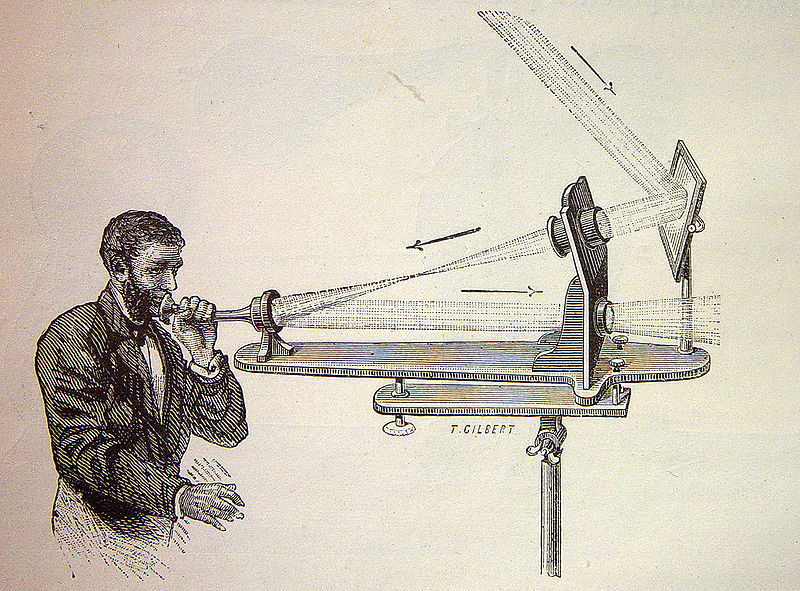
The action of this device is based on the property of selenium to change its electrical conductivity when exposed to sunlight. They are reflected from the mirror, which, in turn, vibrates under the influence of sound. The signal receiver here is just crystalline selenium cells. The mirror modulated the light beam by focusing or scattering light from a source. Bell and a partner created a test setup that helped transmit the signal over a distance of about 213 meters.
But, of course, this device had a huge number of disadvantages, including the ability to work only in clear weather and at a relatively short distance. But be that as it may, Bell's invention is considered the forerunner of modern fiber optic lines.
And then - fiberglass
If we exclude a couple of military projects, telecommunications in the 20th century were implemented using coaxial cables and radiation with a frequency of 1-10 GHz. This is how it was until the advent of optical fiber in the 70s of the last century. Very quickly, it became the main communication channel with a huge bandwidth.
Fiber has become the answer to the challenges of coaxial communications. Its main disadvantage is that the signal needs to be amplified every kilometer or so to compensate for transmission losses. In wireless radio frequency (RF) communications, the repeater spacing can be much longer, but in both cases the bandwidth is limited to ~ 100 Mbps due to the "low" RF carrier frequency.
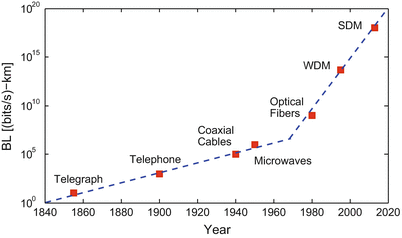
Fiber optic solved all these problems. And after a couple of years, optical fiber has become what it is today. For example, back in 1977, General Telephone and Electronics (now GTE Corporation) sent the world's first direct telephone traffic over a fiber optic system at a speed of 6 Mbps. Today, the world's fiber-optic network is over 400 million kilometers, nearly three times the distance to the Sun.
Fiber optic communications have improved with multiplexing techniques including wavelength multiplexing, time division multiplexing, or spatial division multiplexing. In the laboratory, a combination of these methods has shown excellent results - the data was transferred at a speed of 11 Pbit / s, with a loss of only 5% per kilometer. Repeaters are installed every 80 km, which is of course much better than in the case of coaxial cable.
Internet from a light bulb
In addition to fiber, there are other methods of high-speed data transmission, and without any cables. This is wireless optical communication as it is. LiFi is a bi-directional high speed wireless communication technology.
True, this method requires an LED light bulb, not an incandescent light bulb. It is clear that the technology works only in the line of sight, and the further from the data transfer point, the worse the connection.

One of the first illustrations to explain how the system works. Here, as we can see, handhelds instead of smartphones
For LiFi, a proprietary protocol has been developed, IEEE 802.15.7, which defines three physical (PHY) layers with different bandwidths:
- PHY I was designed for outdoor use and operates at speeds from 11.67 Kbps to 267.6 Kbps.
- PHY II allows data rates from 1.25 Mbps to 96 Mbps to be achieved.
- PHY III is designed for multiple sources with a specific modulation method: Color Shift Keyring (CSK), which can be translated as Wavelength Shift Keying. PHY III can reach speeds from 12 Mbps to 96 Mbps.
The technology has not received much distribution, but it is used in some places. Basically, we are talking about industrial systems, in places with strong electromagnetic interference, where almost any radio communication is impossible or difficult.
What about long distance and wireless optical communication?
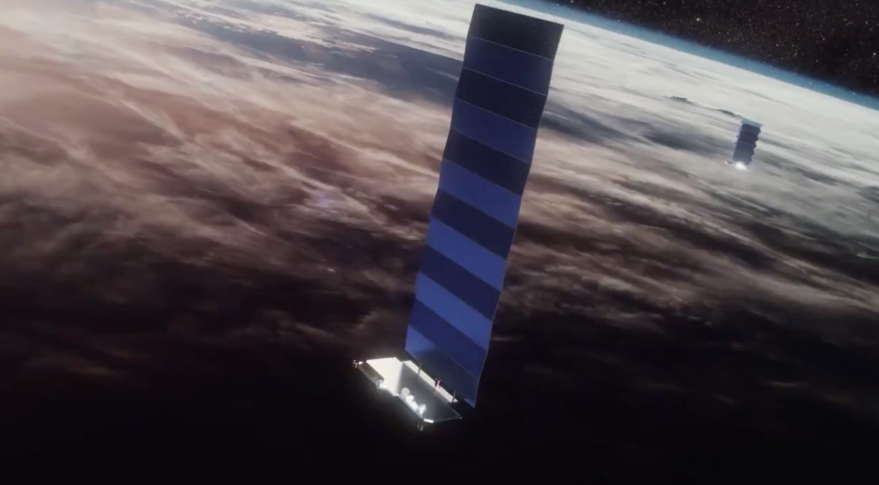
Unfortunately, there is not much to brag about here. Many companies have begun testing data transmission technology using lasers or other optical systems. But, as a rule, these tests did not go beyond the laboratory or test site.
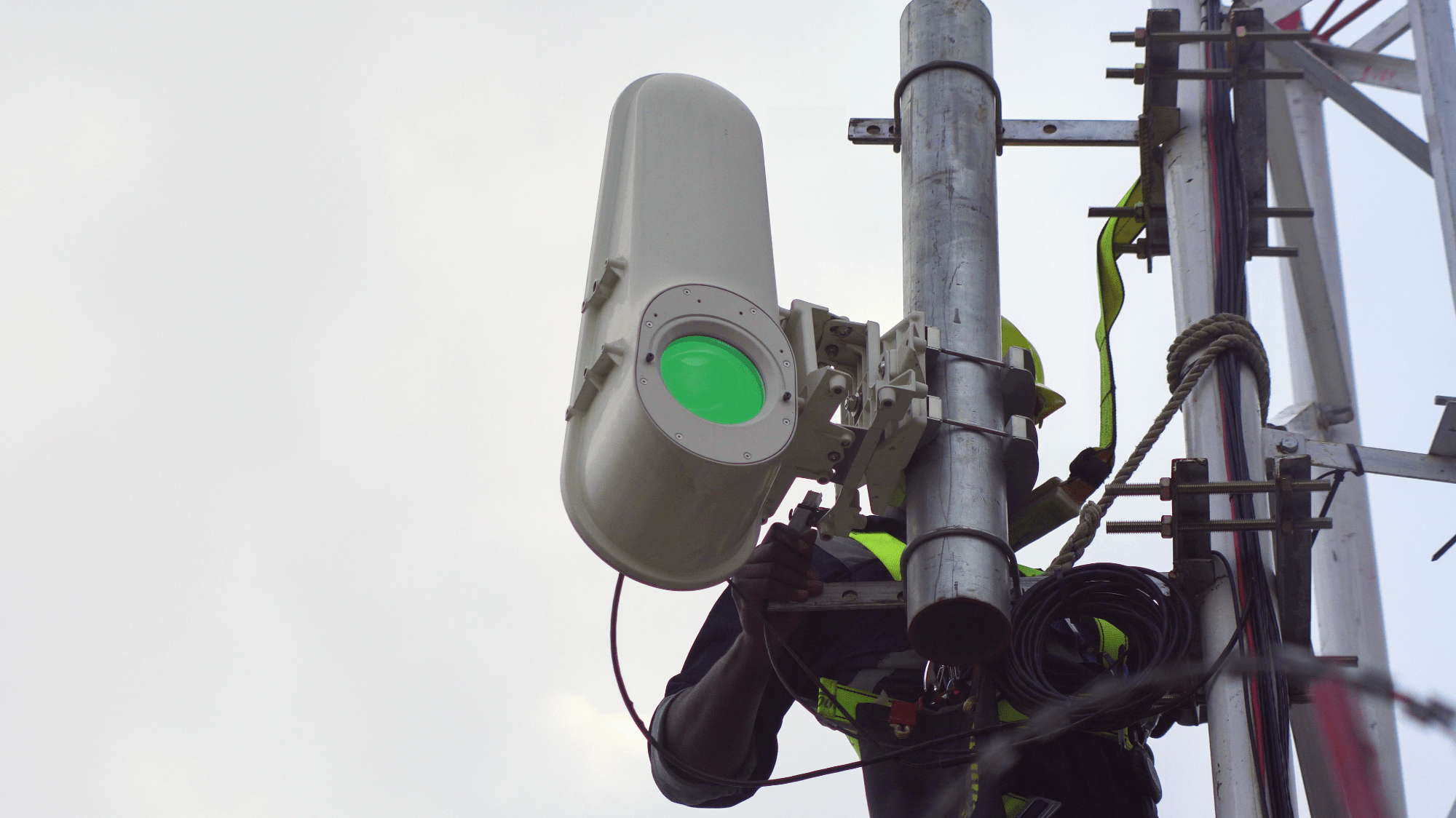
For example, last year, developers at Alphabet built an experimental wireless network in Kenya that uses light. This is not optical fiber, the basis of the system is a beam of light, which is focused on a remote receiving point - a receiving station.
The project was named Project Taara . In the course of its implementation, it was possible to achieve data transmission over a distance of about 20 km without deploying a wired infrastructure. The tests showed a good result. But despite this, the project was then decided to close.
The same can be said for the second project of the same company, Loon. For several years this project was developed, but just a few weeks ago they decided to close it.
There are smaller projects that have been implemented. For example, Koruza offers laser communication at a speed of about 10 Gbps, but the distance does not exceed 150 m. In some cases, Internet providers use laser transmitters to provide communication facilities remote from the main backbone. Sometimes users also create such systems - but such systems are not very common.
In addition, at the beginning of the year, Elon Musk said that Starlink satellites were equipped with laser communications to cover the polar regions. And in a year, all Starlink satellites that are sent into orbit will be equipped with laser communications.
Thanks to the additional type of communication, residents of Alaska will also receive broadband access to the Internet, as the company described in its application to the FCC.
Lasers enable satellites to keep in touch not only with ground stations, but also with each other, and it does not matter where the "colleague" is - in the same orbital plane, or in a neighboring one. Accordingly, the operator will be able to minimize the number of ground stations, expanding the coverage area of remote regions where there are no ground stations at all. In addition, latency is reduced as the number of intermediaries between satellites and ground stations decreases.
